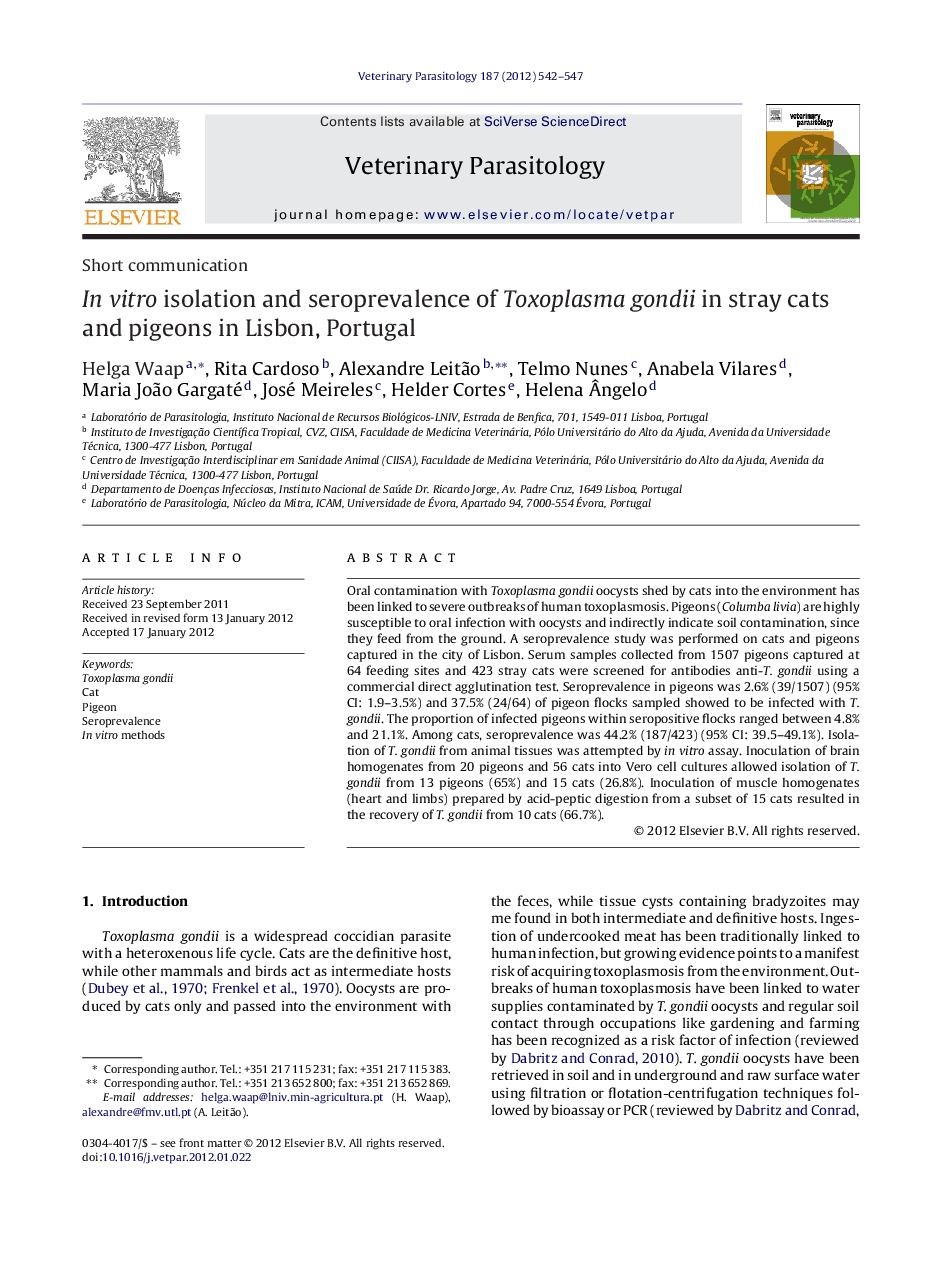| Article ID | Journal | Published Year | Pages | File Type |
|---|---|---|---|---|
| 5804939 | Veterinary Parasitology | 2012 | 6 Pages |
Oral contamination with Toxoplasma gondii oocysts shed by cats into the environment has been linked to severe outbreaks of human toxoplasmosis. Pigeons (Columba livia) are highly susceptible to oral infection with oocysts and indirectly indicate soil contamination, since they feed from the ground. A seroprevalence study was performed on cats and pigeons captured in the city of Lisbon. Serum samples collected from 1507 pigeons captured at 64 feeding sites and 423 stray cats were screened for antibodies anti-T. gondii using a commercial direct agglutination test. Seroprevalence in pigeons was 2.6% (39/1507) (95% CI: 1.9-3.5%) and 37.5% (24/64) of pigeon flocks sampled showed to be infected with T. gondii. The proportion of infected pigeons within seropositive flocks ranged between 4.8% and 21.1%. Among cats, seroprevalence was 44.2% (187/423) (95% CI: 39.5-49.1%). Isolation of T. gondii from animal tissues was attempted by in vitro assay. Inoculation of brain homogenates from 20 pigeons and 56 cats into Vero cell cultures allowed isolation of T. gondii from 13 pigeons (65%) and 15 cats (26.8%). Inoculation of muscle homogenates (heart and limbs) prepared by acid-peptic digestion from a subset of 15 cats resulted in the recovery of T. gondii from 10 cats (66.7%).
